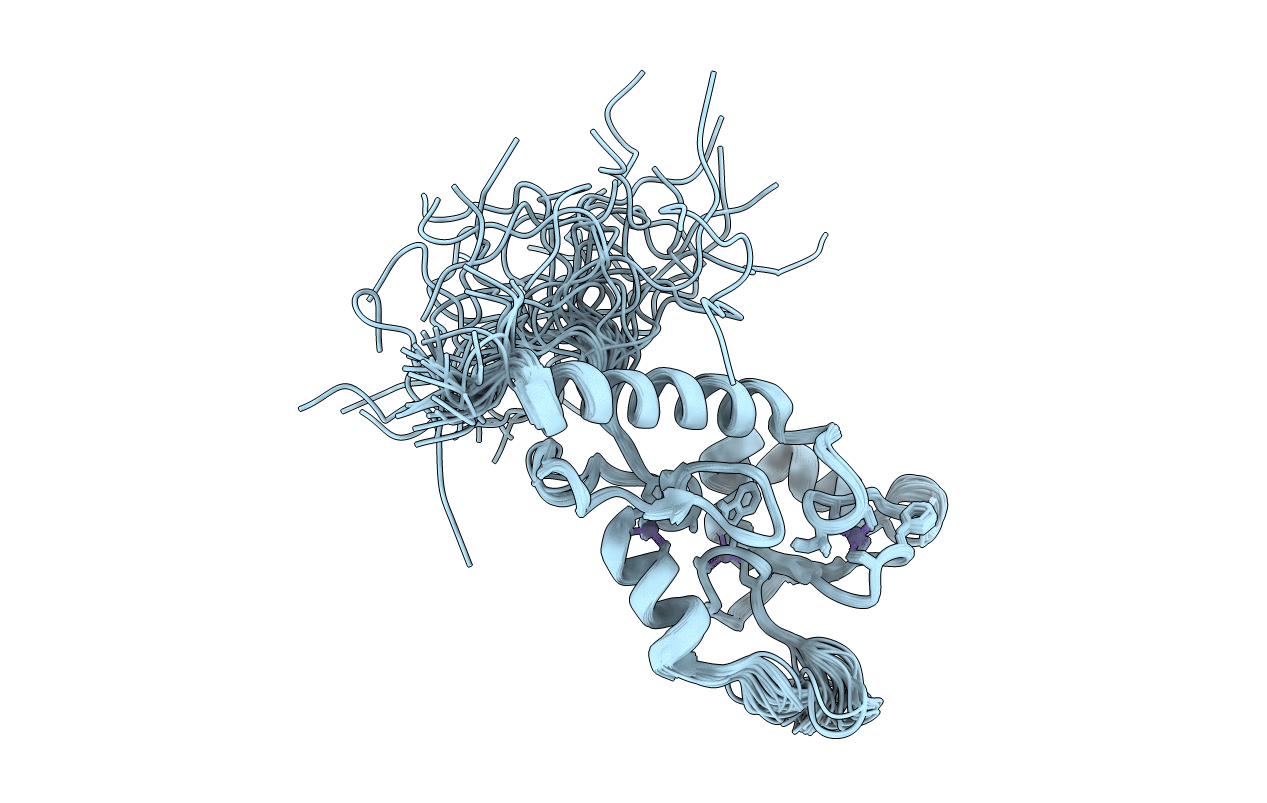
Deposition Date
2006-09-13
Release Date
2007-06-26
Last Version Date
2024-05-08
Entry Detail
PDB ID:
2JM1
Keywords:
Title:
Structures and chemical shift assignments for the ADD domain of the ATRX protein
Biological Source:
Source Organism:
Homo sapiens (Taxon ID: 9606)
Host Organism:
Method Details:
Experimental Method:
Conformers Calculated:
100
Conformers Submitted:
32
Selection Criteria:
lowest energy


